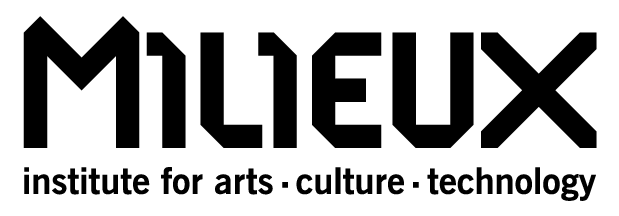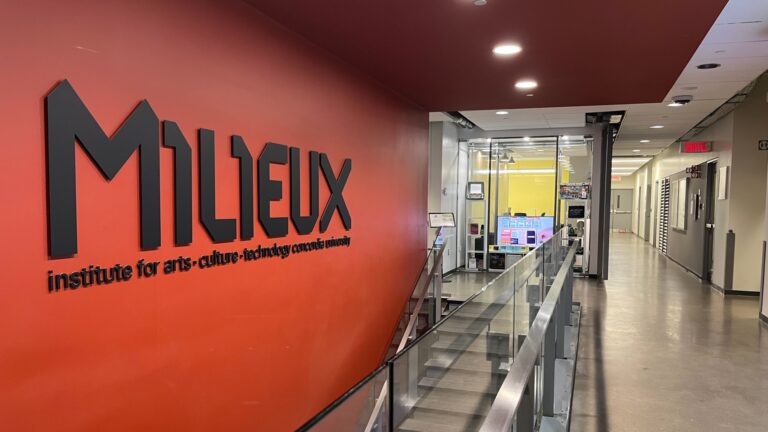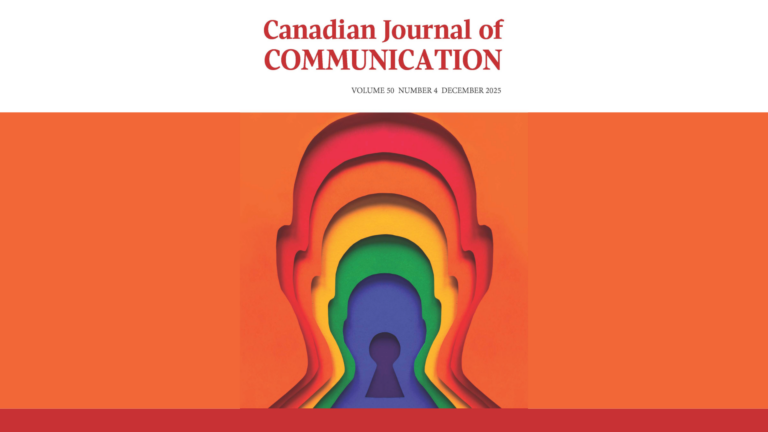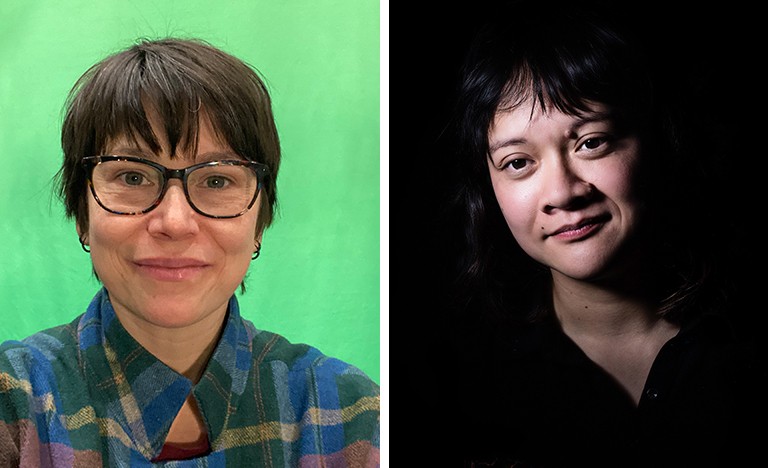This article was originally published in the Montreal Gazette on April 1, 2016.
Milieux Institute: Concordia University’s cutting-edge hub where research intersects and inspires
By Karen Seidman
Traditional academia seems to have no place in the avant-garde hub Concordia University has created on the top two floors of its engineering, computer science and visual arts building on Ste-Catherine St.
Featuring seven unique research clusters, it is a place where art, design, culture and technology intersect.
There are few desks and fewer stodgy professors at the Milieux Institute for Arts, Culture and Technology at Concordia University.
It is, in a word, cool. Very cool.
The work being done there is like nothing you’ve heard of before. There are smart textiles being developed featuring flexible antennae and electronics (including a dress displaying an LED puppy chasing a ball), connective tissue being woven like cloth in cutting-edge bio-textile experimentation, critical disabilities studies, a 3-D drawing tool that will propel animation in a more fully immersive direction.
It is a place where disciplines and methodologies are being forged (ever heard of bio-art before?), where a platform for creative experimentation, interdisciplinary training and progressive imagination has replaced the typical classroom or research lab.
“This is technology that combines creativity, imagination and social engagement in novel and distinctive ways,” Graham Carr, Concordia’s vice-president of research and graduate studies, said in a statement.
Milieux, which brings together 80 professors and about 100 graduate students, also knows when to be low-tech. That’s why it relies on a physical space bringing people together rather than technological links.
“By being in proximity, there’s a certain serendipity factor that can arise,” said co-director Bart Simon in an interview.
The strength of Milieux, said Simon, is in its ability to bring together artists, designers and programmers with traditional scholars. “That will give us technology informed by a broader sensibility, not just by engineers and technicians,” he said.
Graduate student Elise Cotter, who is doing a master’s in media studies, simply described it as a place where there are no limits — a fertile breeding ground for innovation.
“I’ve been exposed to all of these ideas which I had barely considered,” she said in an interview. “All of the clusters feed into each other and inspire each other. It’s fantastic!”
Even Milieux’s office is different, featuring tables and a huge whiteboard mapping out all of the clusters: Textiles and Materiality; Technoculture, Art and Games (TAG); Community and Differential Mobilities; Media History; Initiative for Indigenous Futures; Post-Image; Performance, Immersion and Interactivity.
In the Differential Mobilities lab, co-director Giuliana Cucinelli said people with disabilities have done interesting projects mapping out the places in Montreal that are accessible to them, and have produced their own advocacy videos.
“We are at the intersection of social justice and accessibility,” Cucinelli said. “Our work is not done in a traditional academic sense — it’s more functional.”
TAG, the gaming lab, is filled with sofas and computers and a giant TV featuring video games. The goal there is to study gaming design and culture and to shed light on social issues around gaming, like gender.
But it hasn’t forgotten its low-tech origins, as board games are still featured and are even being developed there.
That’s the case with graduate student William Robinson, who has created an educational game called Cabinet Shuffle. Players are dealt cards with pictures of 90 Canadian MPs which they use to build their own cabinet, while accumulating extra points for pertinent criteria such as diversity and gender parity. (Surprisingly, despite this being a card game about politics, there is no Trump card.)
Robinson said the goal is to teach young people to think about what it takes to build a good political team and to inspire them to consider a career in politics.
Next door at the Indigenous Futures cluster, new media artist Skawennati holds court in a high-tech lab that features virtual reality experiences and worlds, all focused on imagining indigenous people in the future rather than anchored in the past, as is often the case, according to Skawennati.
Not surprisingly, the gadgetry in Milieux is state-of-the-art, from the enormous high-end printers which help push the limits of image-making in the Post-Image lab, to the giant digital industrial embroidery machine churning out textiles with conductive fibres in the Textile cluster.
One of the most unique projects in Milieux has to be in artist WhiteFeather Hunter’s wet lab, where she is finding new ways of growing mammalian tissue in vitro. She uses handwoven looms to blend her hair, horse hair, surgical sutures and silk and then seeds them with live cells to form tissue on a scaffold.
Although she is an artist whose background is in textiles, her work has potential applications for the biomedical field and she labels her award-winning projects bio-art.
It is something that definitely captures the spirit of Milieux.
“I’m creating a whole new set of methodologies that didn’t previously exist,” she said. “It’s a bit of art and a bit of science.”



